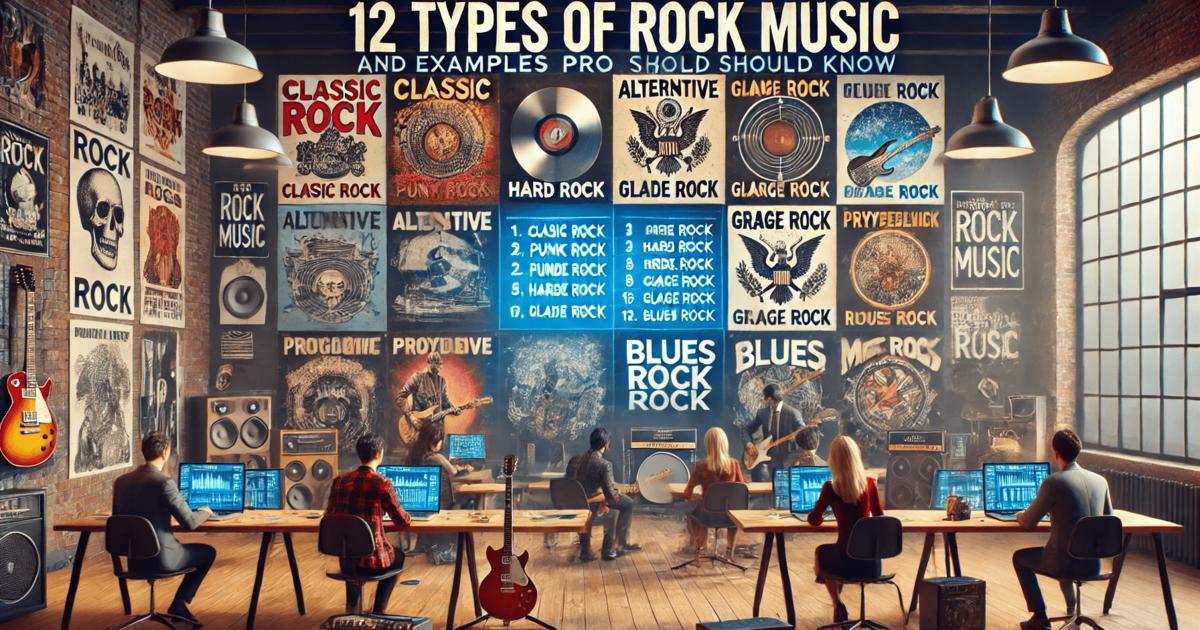12 Types of Rock Music and Examples Every Pro Should Know
Understanding Rock Subgenres in Professional Music Strategy
Rock music is one of the most diversified and long-standing categories in the modern music ecosystem. For professionals working in A&R, catalog management, licensing, or marketing, understanding the distinctions between subgenres is key to successful artist positioning, playlisting, or content monetization.
📌 Viberate Analytics: Professional music analytics suite at an unbeatable price: $19.90/mo. Charts, talent discovery tools, plus Spotify, TikTok, and other channel-specific analytics of every artist out there.
This guide breaks down the most relevant types of rock music and examples, offering clear markers for reference across music industry operations. Each genre entry focuses on sound characteristics and notable artists—useful for brief-writing, sync targeting, catalog segmentation, or campaign development.
Core Rock Subgenres and Examples
Rock & Roll / Rockabilly emerged as the earliest wave of mainstream guitar music. Defined by upbeat, danceable rhythms and guitar-driven arrangements, it set the foundation for later rock styles. Key figures include Elvis Presley, Chuck Berry, and Bill Haley & His Comets—artists whose influence continues to shape branding, sync pitches, and heritage catalog strategy.
Blues Rock is rooted in 12-bar blues patterns, expressive guitar solos, and soulful vocal delivery. It appeals to audiences who appreciate musicianship and legacy sounds. Professionals working with back catalogs or live performance rights often engage with names like The Rolling Stones, Eric Clapton, and Stevie Ray Vaughan.
Folk Rock & Country Rock integrate acoustic instrumentation and songwriting with broader rock elements. Acts such as Bob Dylan, The Byrds, and the Eagles bring strong melodic content and lyrical narrative, useful for film/TV placements, Americana-focused compilations, or mood-based playlisting.
Psychedelic Rock is known for its experimental sound textures, extended improvisations, and studio
effects. Tracks like Pink Floyd's "Careful with That Axe, Eugene" offer atmospheric builds ideal for immersive listening or cinematic sync. Other acts such as Jefferson Airplane and The Doors support 60s/70s period catalog initiatives and experiential playlists.
Progressive Rock (Prog Rock) blends technical musicianship with conceptual complexity. Artists like Yes, Genesis (in their early phase), and King Crimson are prime assets for collectors, audiophile communities, and thematic streaming programs. Their use of odd time signatures and layered arrangements makes them attractive for editorial content requiring intellectual engagement.
Hard Rock & Arena Rock focus on scale and impact—big riffs, large choruses, and stadium-sized production. Led Zeppelin, AC/DC, Queen, and Journey typify this format. Their material performs well in legacy monetization, sport syncs, and energetic playlisting.
Glam Rock & Glam Metal mix strong melodic hooks with theatrical image. Known for its visual flair and radio-friendly sound, this genre supports branding-heavy campaigns and retro-leaning content. Artists include David Bowie, T. Rex, Poison, and Mötley Crüe.
Punk Rock cuts through with its raw, fast-paced, anti-establishment ethos. The Ramones, Sex Pistols, and The Clash are go-to references for rebellion-focused messaging or disruptive cultural narratives. Their catalogs are often tapped for youth campaigns or alternative fashion/music crossovers.
Post‑Punk & New Wave offer a more art-forward approach, fusing minimalism, electronic elements, and layered production. Groups like Joy Division, Talking Heads, and Siouxsie and the Banshees often support curated playlists, stylized media campaigns, and underground brand partnerships.
Alternative Rock, Indie & Grunge represent a shift toward emotionally raw, DIY-informed music that
went from college radio to global stages. R.E.M., Nirvana, Pearl Jam, Blur, and Arctic Monkeys illustrate this evolution. Their work is highly relevant in youth-targeted editorial, cultural documentary scoring, or streaming growth strategies.
Heavy Metal & Related Subgenres prioritize power and aggression, often with high-concept imagery. Black Sabbath, Metallica, Iron Maiden, and Tool dominate this lane. Their catalogs benefit from precise genre tagging for festival placements, gaming sync, and niche fanbase activation.
Subgenre Hybrids & Crossovers show how rock evolves by incorporating elements of other genres. Examples include Linkin Park’s fusion of rock and hip-hop (nu-metal), Radiohead’s integration of rock and electronica, or Mumford & Sons reviving folk-rock with modern production. These acts thrive in cross-platform campaigns, editorial features, and hybrid genre playlists.
Practical Application in the Music Industry
For professionals handling artist rosters, back catalogs, or marketing rollouts, these distinctions are not just academic—they guide strategy. Understanding genre boundaries allows for:
- Better artist positioning across DSPs and editorial contexts
- More accurate sync licensing pitches by matching genre tone to visual content
- Targeted playlist creation that reflects audience expectations
- Informed catalog remastering and re-release plans with genre-specific branding
Additionally, many artists sit across genre lines. Recognizing and leveraging crossover potential can unlock new audience segments and support brand extensions. For instance, an artist whose core catalog is classified as post-punk but has glam and electronic influences might work in both fashion and gaming placements.
Why This Matters for Your Workflow
Whether you're building metadata tags, selecting tracks for an ad brief, or sorting a legacy archive, knowing the types of rock music and examples sharpens your ability to execute efficiently. It also allows cross-functional teams—creative, legal, A&R, marketing—to work from the same clear genre framework.
When used properly, genre knowledge is a professional asset. It boosts clarity in briefs, improves targeting, and ultimately supports better outcomes across licensing, marketing, and artist growth.
For further data-driven segmentation, professionals can use Viberate’s music analytics tools to examine how specific rock subgenres perform across platforms, geographies, and audiences. This adds another layer of strategic insight when planning campaigns or signing artists within the rock spectrum.
Source of music data: Viberate.com

Premium music analytics, unbeatable price: $19.90/month
11M+ artists, 100M+ songs, 19M+ playlists, 6K+ festivals and 100K+ labels on one platform, built for industry professionals.




